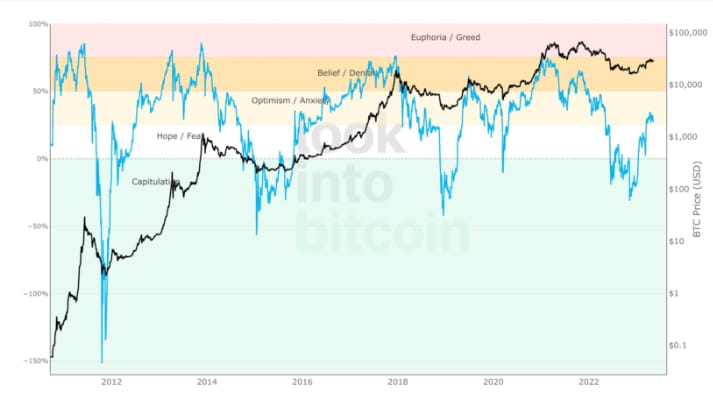In recent years, the buzz surrounding Bitcoin’s 4-year cycle has grown louder and has become a widely discussed topic among crypto enthusiasts and market analysts. This cycle is marked by major events and trends in the cryptocurrency market, sparking curiosity and interest among experienced players and newcomers alike.
However, the causes and effects of Bitcoin’s 4-year cycle are often misunderstood or oversimplified. Investors may benefit from examining the factors that influence it, including halvings, macroeconomic influences, and human behavior.
Bitcoin Halving: Decisive Catalyst or Self-Fulfilling Prophecy?
One of the most interesting aspects of Bitcoin’s behavior is the “halving.” This is a predetermined event where the amount of new BTC generated and distributed by the network is cut in half.
Currently, about 900 bitcoins are produced every day. In the upcoming halving, scheduled for late Q1 or early Q2 next year, that number will drop to 450. Previous halvings in 2012, 2016, and 2020 marked major turning points for Bitcoin.
The halving affects the price of Bitcoin due to simple principles of supply and demand.

When the halving occurs, even if demand for Bitcoin remains stable, the reduction in supply will create an imbalance that will push prices higher. This price momentum could trigger a multi-year bull run for Bitcoin.
As the cycle progresses, the initial impetus from the halving fades, but the momentum continues, driving the market forward.
Ripple Effect: Liquidity Fragmentation in Crypto Markets
As the bull market matures, liquidity spreads from Bitcoin to other cryptocurrencies such as Ethereum and eventually to riskier long-tail assets.
This fragmentation continues until the influx of new money into the cryptocurrency market cannot sustain the increase in the number of assets driven by correlation with the major cryptocurrencies and new projects being created.

When this unsustainable point is reached, the market collapses and the dispersion of liquidity reverses. Funds flow from long-tail assets back to Bitcoin and Ethereum, providing a reset point for the liquidity cycle.
This liquidity flow pattern is not unique to the crypto market, but is a characteristic of traditional financial markets.
The human factor: behavioral dynamics and market psychology
In addition to halving and liquidity cycles, another important factor that affects Bitcoin market behavior is the psychological dynamics of market participants. To better understand this, it is necessary to delve into Bitcoin's on-chain data.
The price of Bitcoin and the profitability of active network participants significantly influence market dynamics. In fact, market participants who have accumulated a large amount of unrealized profits are more likely to sell in a market downturn, fearing the loss of these gains.

Additionally, individuals who enter the market after a significant price rally are often inexperienced or less convinced of the long-term value of the asset. These factors result in a more volatile holder base than the stable base seen at the lows of a bear market.
Profitability and shareholder base: key drivers behind the
When discussing profitability, people often mention a range of metrics categorized by cost. These include realized price, a proxy for the network’s total cost basis, and realized price for short- and long-term holders.
These indicators help understand the market conditions – whether it is unrealized losses or gains.

The change between the market price and the total cost basis can be measured using the market value to realized value (MVRV) ratio.
High MVRV readings indicate large amounts of unrealized profits and have historically marked peaks in Bitcoin’s 4-year cycle.
Miner influence: a diminishing force in Bitcoin’s 4-year cycle
Historically, Bitcoin miners have had a significant impact on the market as a procyclical force.
Miners accumulate Bitcoin when they are profitable during bull markets and are forced to sell during bear markets.

However, term capitalization indicators suggest that their influence on the market has declined.
Global macro picture: rising influence
Historically, Bitcoin has maintained a degree of insulation from global macroeconomic factors. However, as it becomes more integrated with the traditional financial system and gains adoption by more institutional investors, it becomes more susceptible to these influences.
For example, fluctuations in the strength of the U.S. dollar, changes in monetary policy, and some idiosyncratic international tensions can now directly affect Bitcoin’s market behavior.

Bitcoin is often viewed as a safe haven asset during economic crises or financial market instability, just like gold.
Therefore, during times of heightened global economic risk or uncertainty, we could see a surge in demand for Bitcoin, which could push its price higher.
Rules: Wild Card
The role of regulatory factors in shaping Bitcoin market behavior is considerable and often unpredictable. While some countries have embraced Bitcoin and other cryptocurrencies, others have imposed strict regulations or outright bans.
Positive regulatory news can drive Bitcoin prices higher, while negative news can trigger a sharp drop.
For example, when countries like Japan and South Korea recognized Bitcoin as a legal payment method, it had a significant positive impact on its price.
Conversely, when a country announced a crackdown on Bitcoin mining and trading, it caused the market to fall sharply.
Preparing for the next Bitcoin 4-year cycle
A complex interplay of multiple factors shapes Bitcoin’s market behavior. These include its built-in halving mechanism, liquidity cycles, the psychology and behavior of market participants, the influence of miners, global macroeconomic factors, and regulatory developments.
Understanding these factors can give investors and market participants valuable insights into Bitcoin’s potential price action.
Nonetheless, due to the highly volatile and unpredictable nature of the crypto markets, one should not view these factors as definitive predictors. Instead, one should use them as tools to assess probability and manage risk.
As Bitcoin continues to develop and mature, the factors that influence its market behavior may also change. Therefore, it is important to stay up to date with the latest developments in Bitcoin and the broader cryptocurrency market.

